
Cube of Space: William Blake's Four Zoas/Functions
| |
|
| |
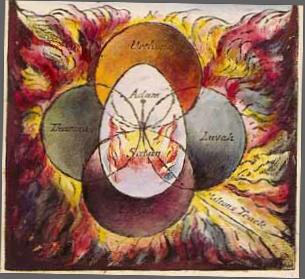
| |
|
| |
| |
| Blake's image of Adam Qadmon as the Universal Man is Albion, in whom the Four Lives, or Zoas, are united in one four-fold vision. | |
| |
|
In Blake's cosmology, in Eternity (beyond space-time), Urizen/Reason in the South and Urthona/Imagination in the North
are opposites, as are Tharmas/Body in the West and Luvah/Love/Passion in the East. In Man's fallen state, Passion
has taken the place of Reason, with consequences for all the functions.
Tharmas, Body, is often assimilated to sensation, perhaps on the basis of | |
| For that calle'd Body is a portion of Soul discern'd by the five Senses, the chief inlets of Soul in this age | |
|
but that doesn't mean the Body is sensation. | |
| |
|
Each of the Zoas have a sensation; Tharmas is the "parent power" whose sensation is the tongue; this tongue is "vegetated" and "devouring." | |
|
Tharmas, the third Zoa, personifies "the principle of 'vegetative' life," and is called "the god of the waters"
who resides within the realm of physical sensation (Berger 151). Initially, "his function in the eternal world is
to hold the other Zoas together in the unity of Albion" (Bloom 948, 4:5-5:28).
What is even more interesting is that Tharmas represents the faculty of man that "feels only the blind forces of life and growth"
(Berger 130) and that has "the capacity to transform desire into actuality" (Bloom 948, 4:5-5:28).
Qabbalistic Patterns in Blake's The Four Zoas Justin Scott Van Kleeck | |
|
The Body is the part of the Soul that the senses can apprehend, not the senses themselves. Tharmas is the "parent power" because it provides the body -- the material, biological supports and instinctual/vegetative (growing/devouring) energies -- for the other functions. Tharmas is the "god of the waters" because that is where the biological supports for life exist -- in the world and in our bodies. The "capacity to transform desire into actuality" doesn't exactly sound like sensation either. Tharmas provides the energy for the actualization of desires (in the future of Love: see the Stoic model of impulse and assent). We are now on familar ground, with the unstructured past in the West and the indeterminate future in the East. The Sun, planet of the West in Adam Qadmon's Cube of Space, is formed by Kaf/20, the physical supports for life (Blake's Body) and provides the unstructured energy necessary for structuration to happen. Venus here makes no sense, see below. On the other hand, where do we have our in-tuitions? In our fallen state, Emotion has taken the place of Reason and most Americans don't believe in evolution. Here's what happened: | |
| |
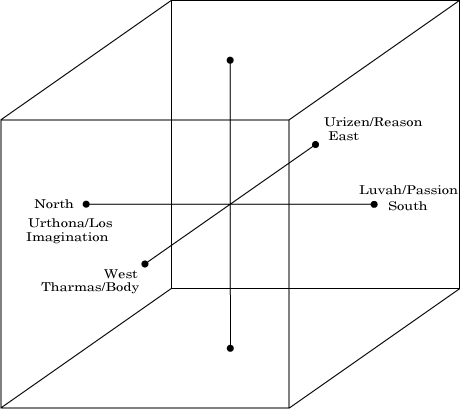
| |
| |
|
This leaves us with Blake's Imagination. Urizen/South and Reason is opposed to Urthona/North and Imagination, just as Kant opposed Understanding to Imagination and word to image. But Imagination, especially in Blake's use as a link to the supra-mundane, doesn't seem to fit sensation either. The problem with typologies, even with simple four-function typologies, is a definition of terms. We have already seen how sensation fell into intuition through a lack clarity. One central problem is the confusion of senses with sensation. Sensation is the function that is in touch with reality. It functions mostly and usually unconsciously, using pre-programmed neurological modules located outside the realm of cognitive function to acquire images of reality. The senses, on the other hand, are different windows into that raw stream of experience. The window is not the view. None of the other functions can kill you. Or take you to heaven. Just as the Body has two energies, vegetative and devouring, Imagination functions at the border between two realities: inner and outer. We can have "sensations" of both the inner and outer worlds, the former called Imagination and the latter called Sensation. But we know that sensation is based on image-processing, and the kind of imagination that Blake is talking about is sensual. Blake's planetary placements only partially agree with our ancient sources. Urizen/Mercury is reaaon/perception in the South, and Luvah/passion is future/desire in the East. But he assigns Venus instead of the Sun to Tharmas/West (Body) and considers Urthona/imagination to be an element, "earth," in the North. Venus, the fallen Bright and Morning Star, at Adam Qadmon's North (not West) is spelled Nogah, Noun-Waw-Gimel-Hay and describes two lives, one inner (Hay/5) and one outer (Noun/50, functionally linked and proliferating. The two qualities of Venus are Hhan and K'ior, grace (unstructured, indeterminate) and images/mirages (packages of light/real probability fertilizing the universal container). Imagination is the faculty for the apprehension of inner and outer life and the gateway to both material and spiritual reality. In the Cube of Space, the tenth sephirot is in the North, on the Left, from Adam Kadmon's (not fallen man's, which is reversed) perspective. This is the Sephira of Yod, Existence, and the Kingdom of God. | |
| |
|
Liberation in four-fold vision reunites the Male and Female in a Bow of Mercy whose children are the quiver and arrows of love, and restores Luvah to the East. | |
|
| |
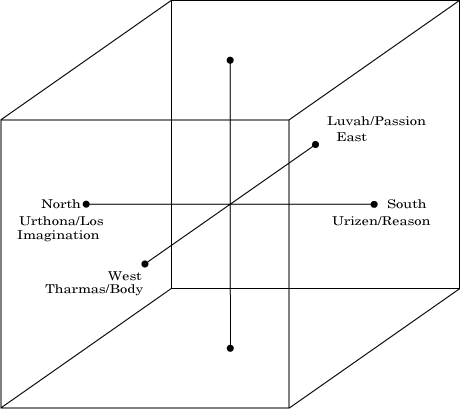
| |
|
| |
| |
|
| |
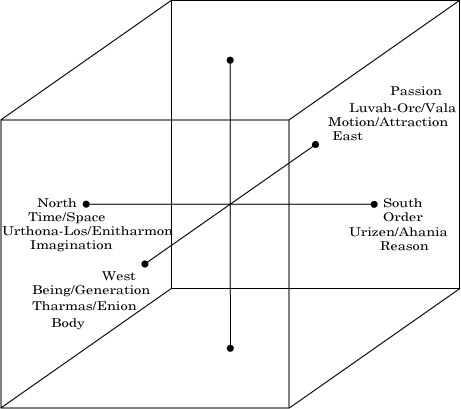
| |
|
The four cardinal points are associated with the four Zoas:
the north is associated with Los/Urthona, the south with Urizen, the east with Luvah/Orc, and the west with Tharmas.
This configuration constitutes the basis for Blake's finite geography and depicts the perspective within Ulro.
From "Great Eternity" the "Four Points" have other dimensions: the north is associated with the nadir,
the south with the zenith, the east with the centre, and the west with the circumference.
This configuration constitutes the basis for Blake's infinite or ideal geography and depicts the perspective of those
without Ulro. It is essential to bear in mind that the two sets, within and without Ulro, operate simultaneously.
The Four Zoas (Chapter 11) by David Whitmarsh-Knight | |
|
| |
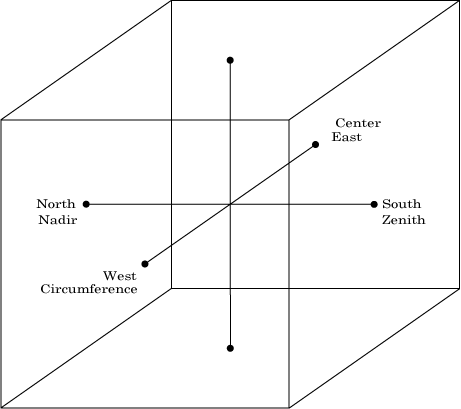
| |
|
| |
| |
|
| |
|
William Blake: Religion and Psychology: Dividing Zoas THE LAND OF ULRO: Czeslaw Milosz on William Blake by Bill Tremblay - Plume Czeslaw Milosz. The Land of Ulro. Trans. Louis Iribarne. New York: Farrar, Books Of The Times - The New York Times -- THE LAND OF ULRO. By Czeslaw Milosz William Blake's Mythic System Ulro | The Honest Courtesan Ginsberg on Blake continues - 27 - The Allen Ginsberg Project William Blake: Golden String: Heaven and Hell Introducing The Blake Model | Adam Komisaruk | Blake/An Illustrated Quarterly | Volume 38, Issue 3 Blake and the Zodiac, by Rod Tweedy | thehumandivinedotorg (*) Zodiacal Physiognomy: William Blakes friendship with astrologer John Varley Sense - Wikipedia Stoic Philosophy: Four Powers of the Hegemonikon Blake Links |
